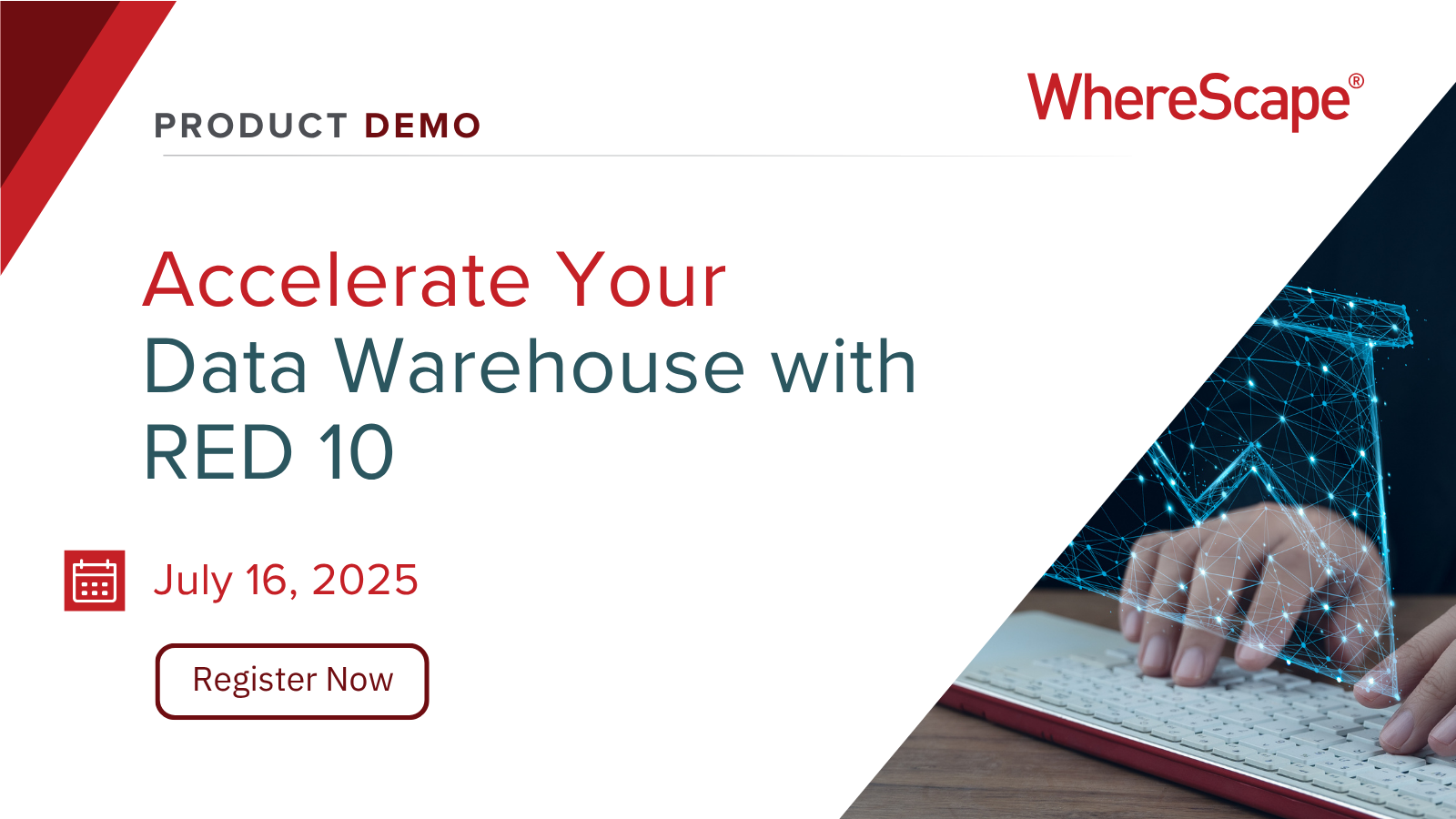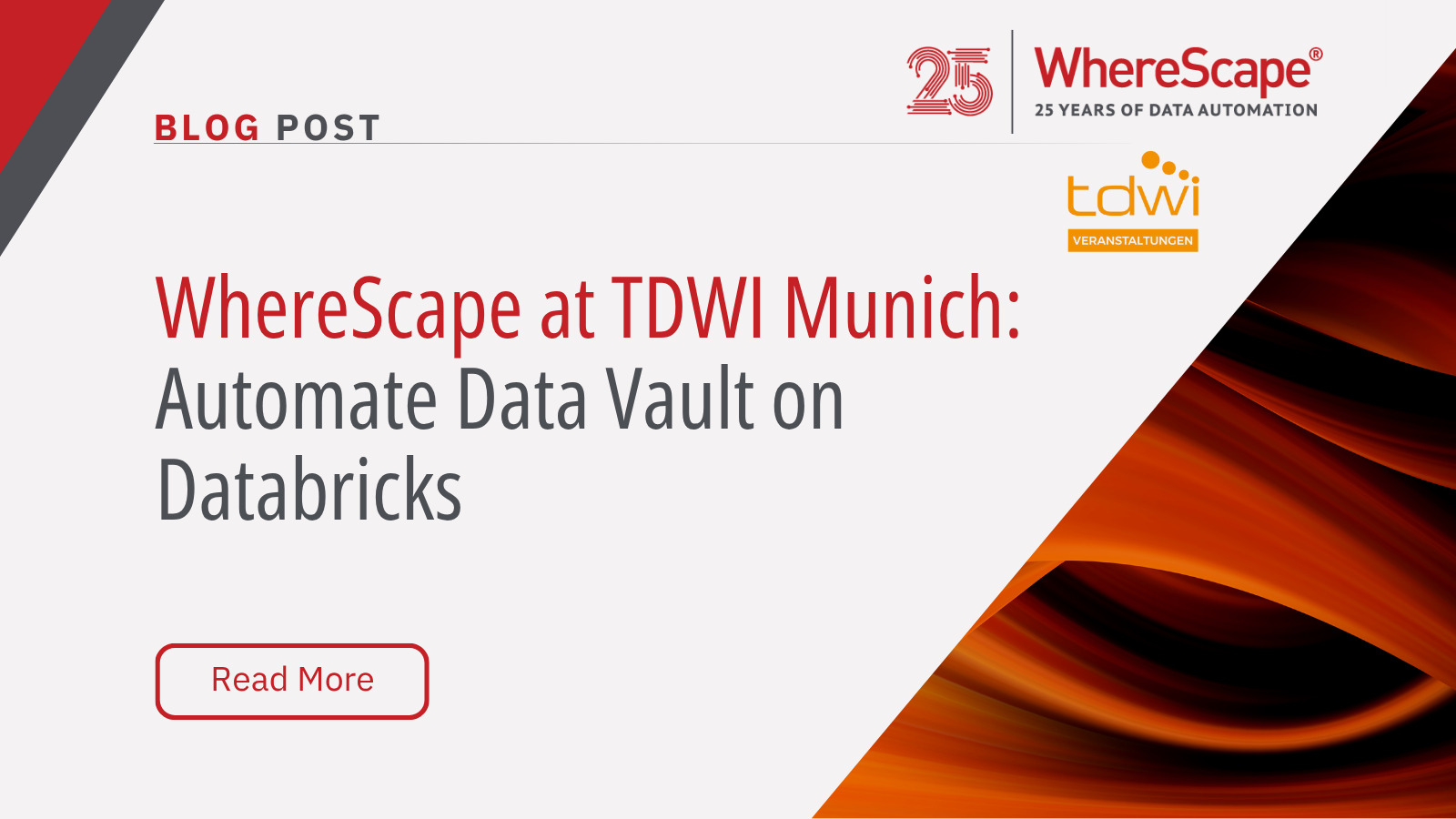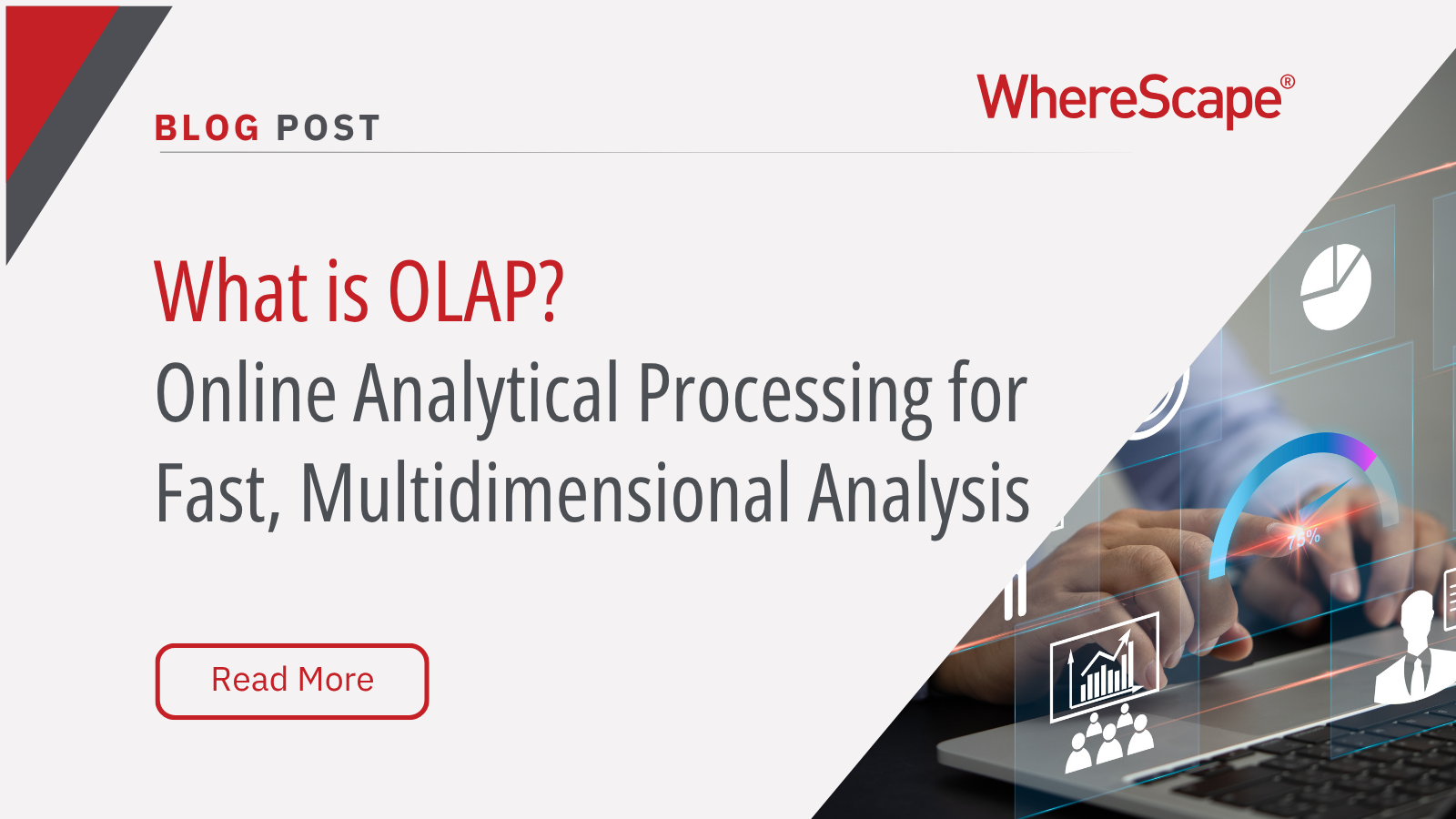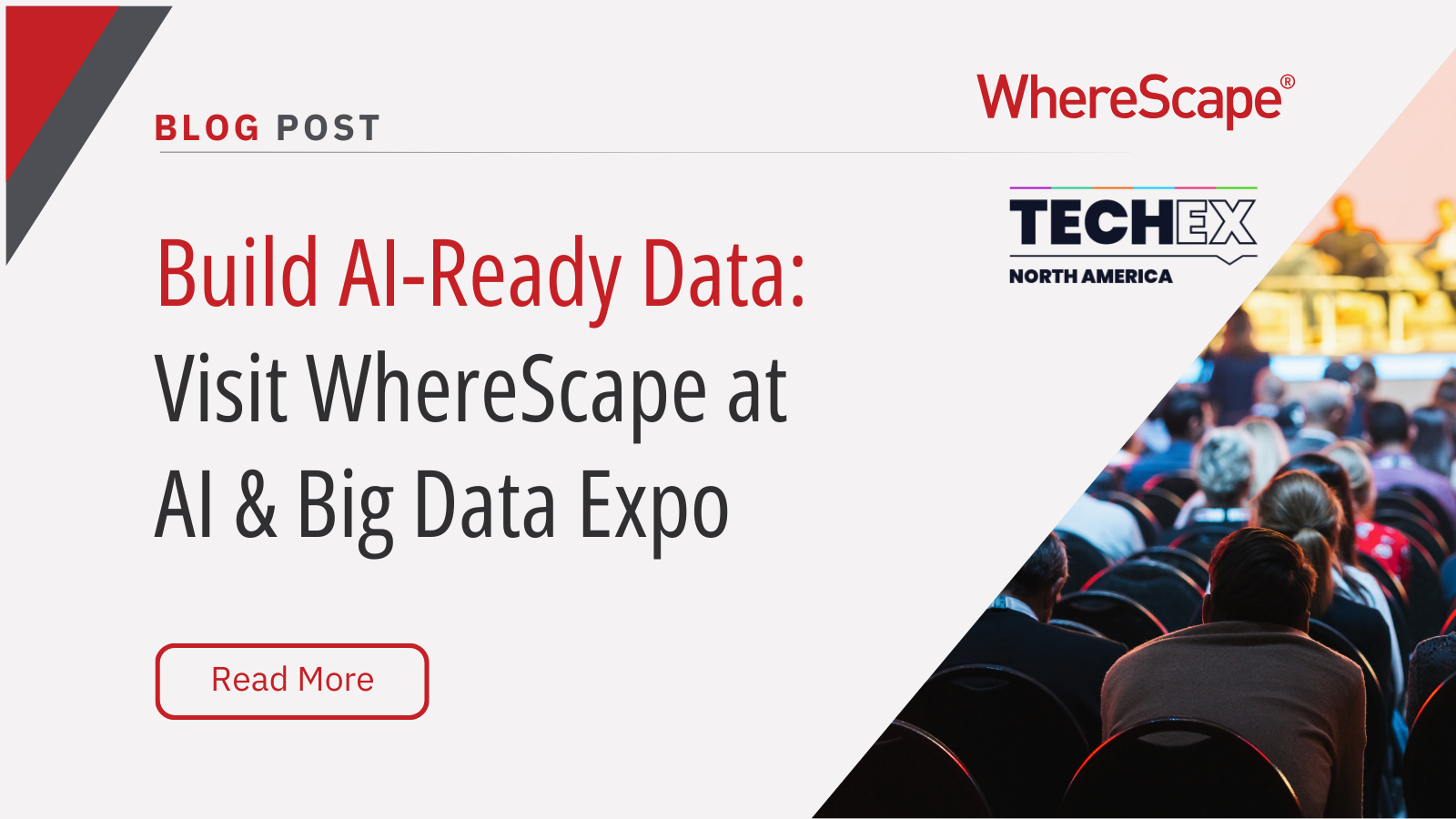Tune in for a free, live virtual hands-on lab...
Information Management Maturity
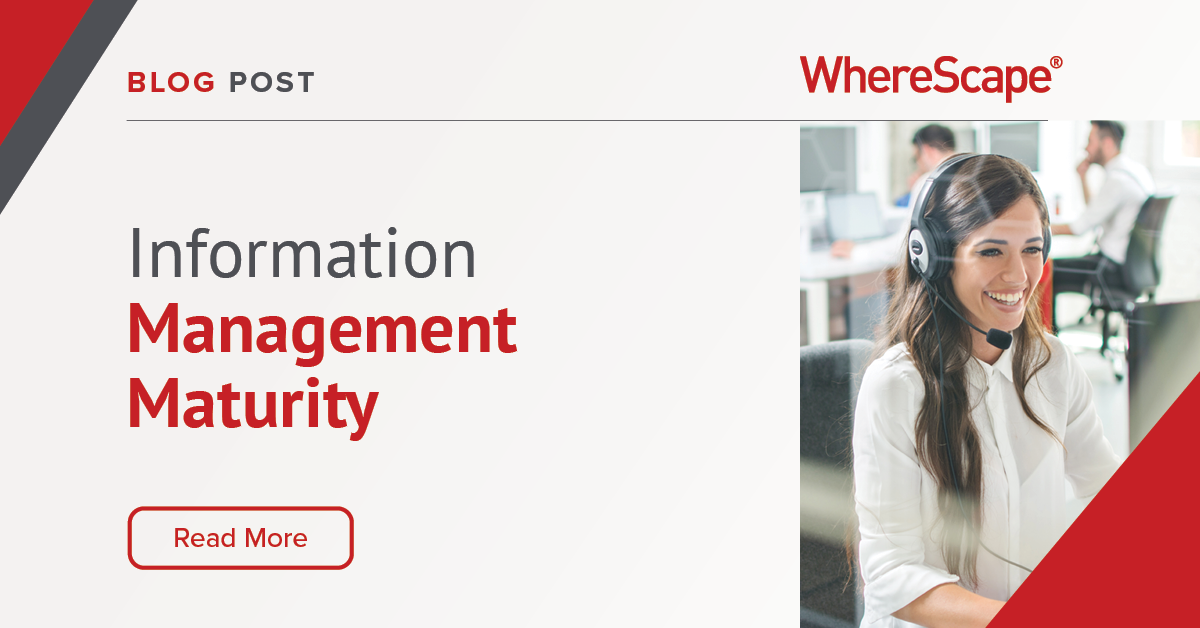
Unlocking Your Business Potential: Understanding and Enhancing Information Management Maturity
In a recent report by Gartner, they emphasize the crucial role of information in the current business environment, stating, “Through 2025, organizations that are data-driven will outperform their industry peers in profitability by an average of 8%.” This powerful statement underscores how information has become the primary catalyst for growth and success in today’s fast-paced business landscape. Converting raw data into valuable insights is essential for making informed decisions and staying ahead of the competition. This is where the concept of Information Management Maturity comes into play, helping organizations assess and improve their data handling capabilities. In this article, we will explore who is interested in Information Management Maturity, the processes it impacts, and the key industry trends shaping its future.
Data-Driven Enterprises
Who Is Interested in Information Management Maturity?
Information Management Maturity is becoming increasingly important for various roles within organizations. CIOs, CDOs, and other IT executives responsible for data strategy and management focus on this concept to ensure that their organizations can unlock the full potential of their data assets. Additionally, data architects, data analysts, and data scientists who work directly with data rely on strong Information Management Maturity levels to drive better outcomes in their analytics and modeling efforts. Managers and team leaders responsible for data-driven decision-making within the organization also require a mature data infrastructure to make informed, strategic choices.
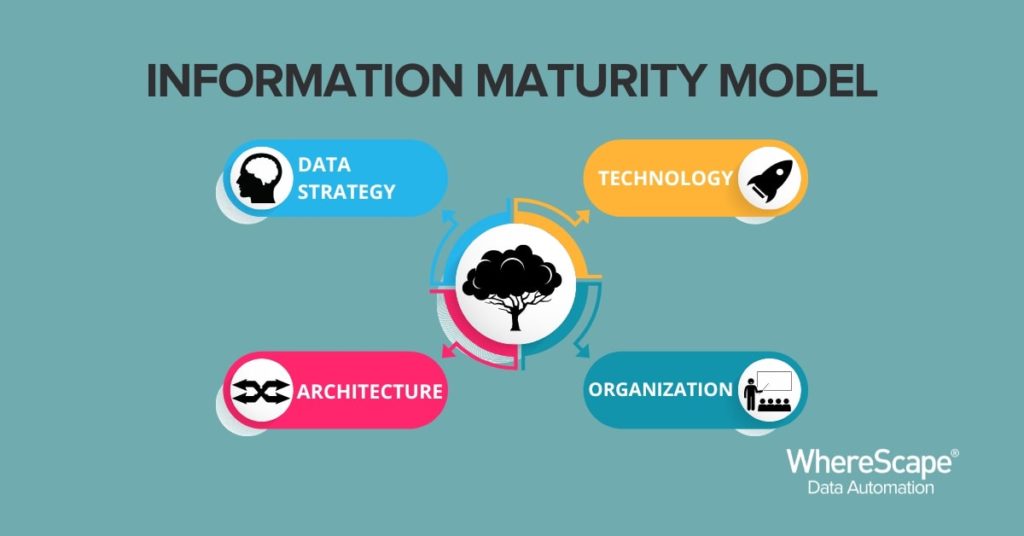
IT Maturity Model
Processes Impacted by Information Management Maturity
Information Management Maturity has a profound impact on several key processes within organizations. Data governance, data quality, and data security processes are essential for maintaining and improving maturity levels, ensuring that data assets are accurate, secure, and compliant with regulations. Data integration, data migration, and data warehousing efforts are directly influenced by an organization’s maturity level, affecting the efficiency and effectiveness of these processes. Reporting, analytics, and business intelligence initiatives also rely on robust Information Management Maturity to generate valuable insights and drive business growth. Furthermore, big data processing and machine learning capabilities are significantly affected by an organization’s maturity level, determining the success of these advanced analytics efforts.
Data Management Trends
Evolving Trends in Information Management
Several trends are shaping the future of Information Management Maturity. The increased focus on data privacy and security regulations, such as GDPR and CCPA, has prompted organizations to prioritize maturity in order to maintain compliance and protect sensitive data. The growing adoption of cloud-based data storage and processing solutions has created new opportunities and challenges for organizations looking to enhance their maturity. The rise of real-time data streaming and analytics has highlighted the need for mature data management processes to support these fast-paced, data-driven initiatives. Additionally, the integration of artificial intelligence and machine learning in data management processes has spurred organizations to improve their maturity to take advantage of these cutting-edge technologies.
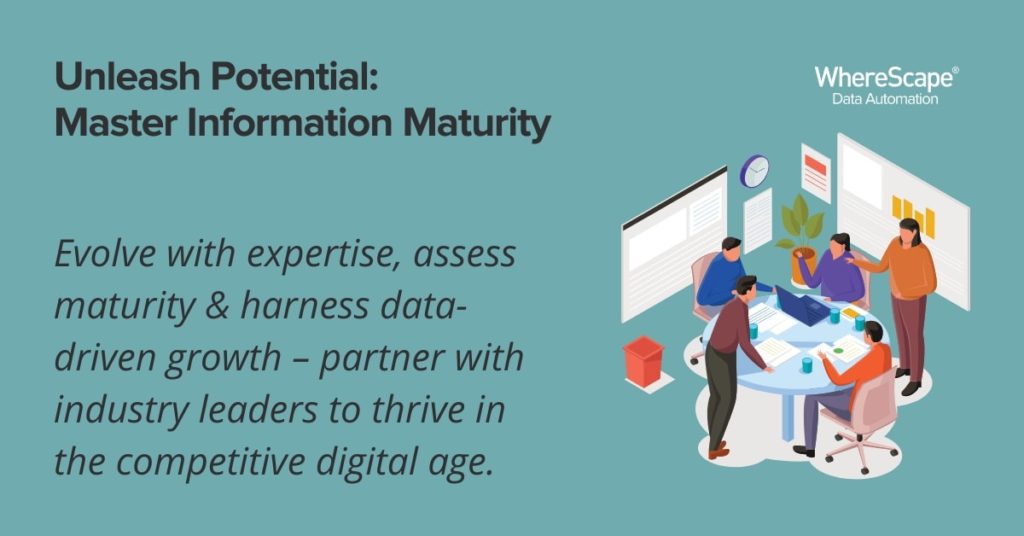
Insights from Industry Influencers
William McKnight, a leading expert in data management, has authored numerous works on the topic, including his influential book “Information Management: Strategies for Gaining a Competitive Advantage with Data.” McKnight emphasizes the importance of a well-defined data strategy and effective data governance in achieving high levels of Information Management Maturity. As McKnight states, “Data is the new currency of business, and those who know how to manage it, protect it, and extract value from it will be successful in the years to come.”
WhereScape Data Automation
How WhereScape’s Capabilities Support Information Management Maturity
WhereScape offers data automation solutions that streamline data warehousing, integration, and migration processes, enabling organizations to create a strong data foundation. By improving data governance and data quality, WhereScape’s solutions directly contribute to enhancing Information Management Maturity. With WhereScape, organizations can establish a solid data foundation, allowing them to focus on extracting value and insights from their data. These solutions help businesses to tackle critical components of Information Management Maturity, such as data governance and data quality, ultimately driving better decision-making and strategic planning.
Information Management Maturity
Understanding and enhancing Information Management Maturity is crucial for modern businesses looking to unlock their full potential. As the business landscape continues to evolve, organizations must assess their current maturity levels and implement strategies to stay ahead of the curve. By leveraging insights from industry experts like William McKnight and solutions from companies like WhereScape, businesses can effectively harness the power of their data to drive growth and success in the increasingly competitive digital age.
WhereScape Data Automation
WhereScape eliminates the risks in data projects and accelerates time to production to help organizations adapt better to changing business needs.
WhereScape at TDWI Munich: Automate Data Vault on Databricks
WhereScape at TDWI Munich 2025: Automate a Full Data Vault on Databricks in Just 45 Minutes June 24–26, 2025 | MOC Munich, Germany As data complexity grows and business demands accelerate, scalable and governed data architectures are no longer optional—they're...
What Is OLAP? Online Analytical Processing for Fast, Multidimensional Analysis
Streamline your data analysis process with OLAP for better business intelligence. Explore the advantages of Online Analytical Processing (OLAP) now! Do you find it challenging to analyze large volumes of data swiftly? A Forrester study reveals that data teams spend...
Build AI-Ready Data: Visit WhereScape at AI & Big Data Expo
June 4–5, 2025 | Booth 202 | Santa Clara Convention Center As organizations scale their artificial intelligence and analytics capabilities, the demand for timely, accurate, governed, and AI-ready data has become a strategic priority. According to Gartner, through...
Automating Star Schemas in Microsoft Fabric: A Webinar Recap
From Data Discovery to Deployment—All in One Workflow According to Gartner, data professionals dedicate more than half of their time, 56%, to operational tasks, leaving only 22% for strategic work that drives innovation. This imbalance is especially apparent when...
What is a Data Model? How Structured Data Drives AI Success
What is a data model? According to the 2020 State of Data Science report by Anaconda, data scientists spend about 45% of their time on data preparation tasks, including cleaning and loading data. Without well-structured data, even the most advanced AI systems can...
ETL vs ELT: What are the Differences?
In working with hundreds of data teams through WhereScape’s automation platform, we’ve seen this debate evolve as businesses modernize their infrastructure. Each method, ETL vs ELT, offers a unique pathway for transferring raw data into a warehouse, where it can be...
Dimensional Modeling for Machine Learning
Kimball’s dimensional modeling continues to play a critical role in machine learning and data science outcomes, as outlined in the Kimball Group’s 10 Essential Rules of Dimensional Modeling, a framework still widely applied in modern data workflows. In a recent...
Automating Data Vault in Databricks | WhereScape Recap
Automating Data Vault in Databricks can reduce time-to-value by up to 70%—and that’s why we hosted a recent WhereScape webinar to show exactly how. At WhereScape, modern data teams shouldn't have to choose between agility and governance. That's why we hosted a live...
WhereScape Recap: Highlights From Big Data & AI World London 2025
Big Data & AI World London 2025 brought together thousands of data and AI professionals at ExCeL London—and WhereScape was right in the middle of the action. With automation taking center stage across the industry, it was no surprise that our booth and sessions...
Why WhereScape is the Leading Solution for Healthcare Data Automation
Optimizing Healthcare Data Management with Automation Healthcare organizations manage vast amounts of medical data across EHR systems, billing platforms, clinical research, and operational analytics. However, healthcare data integration remains a challenge due to...
Related Content
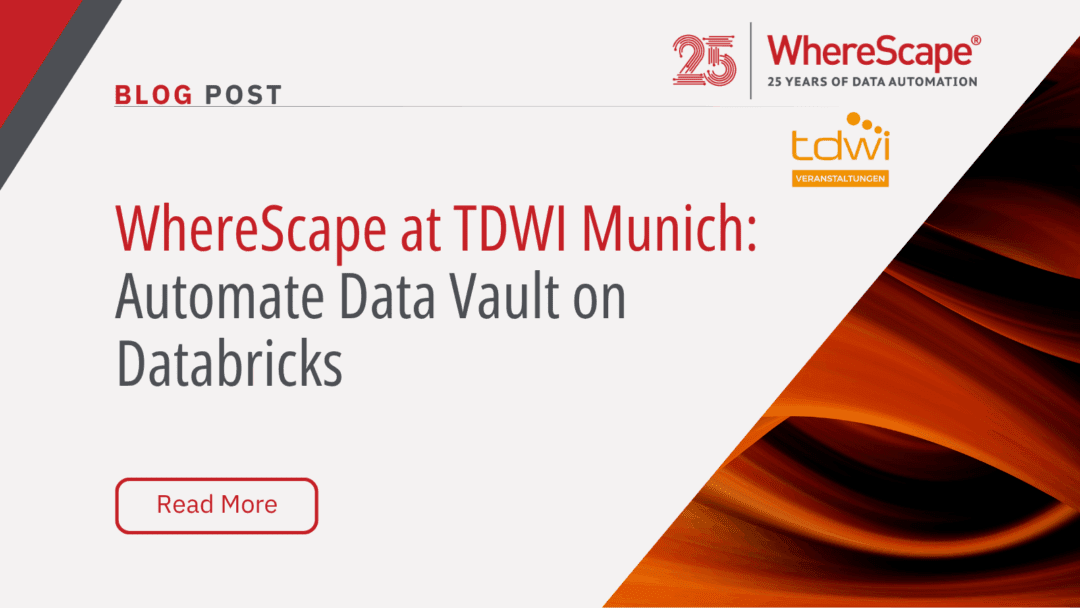
WhereScape at TDWI Munich: Automate Data Vault on Databricks
WhereScape at TDWI Munich 2025: Automate a Full Data Vault on Databricks in Just 45 Minutes June 24–26, 2025 | MOC Munich, Germany As data complexity grows and business demands accelerate, scalable and governed data architectures are no longer optional—they're...
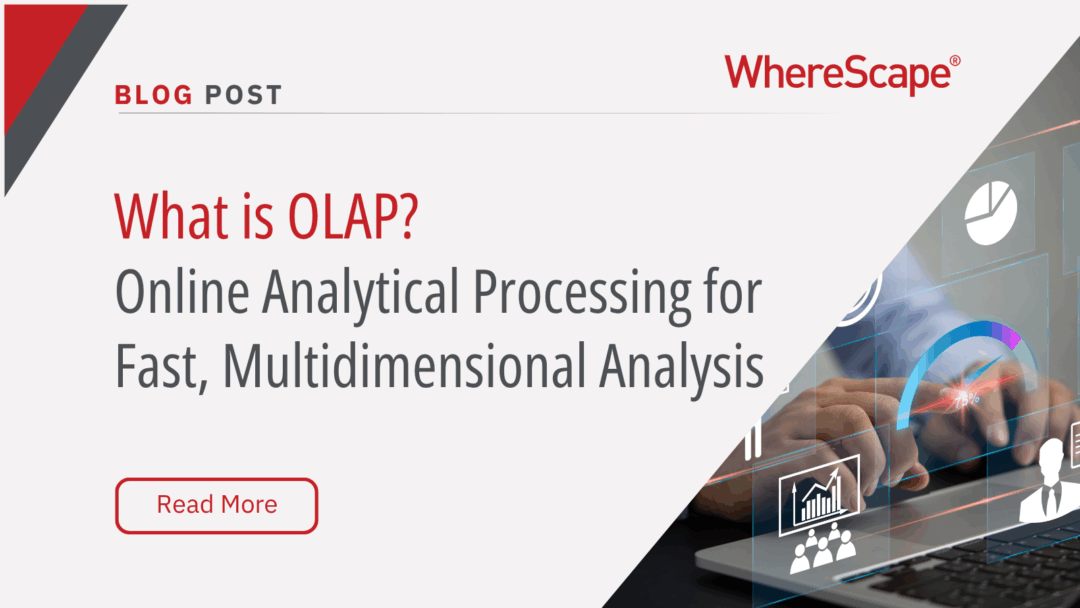
What Is OLAP? Online Analytical Processing for Fast, Multidimensional Analysis
Streamline your data analysis process with OLAP for better business intelligence. Explore the advantages of Online Analytical Processing (OLAP) now! Do you find it challenging to analyze large volumes of data swiftly? A Forrester study reveals that data teams spend...
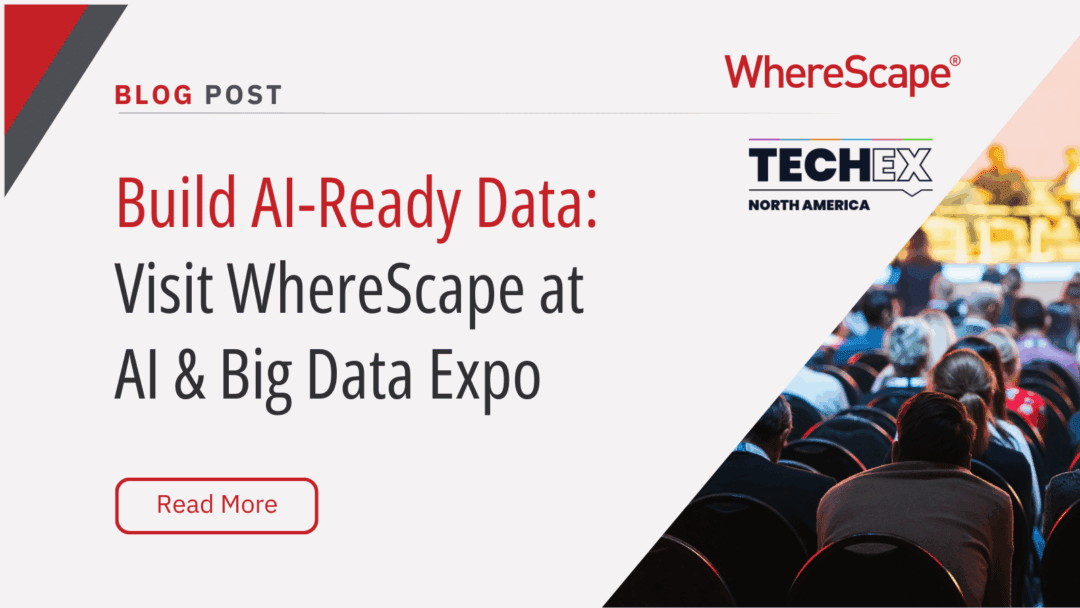
Build AI-Ready Data: Visit WhereScape at AI & Big Data Expo
June 4–5, 2025 | Booth 202 | Santa Clara Convention Center As organizations scale their artificial intelligence and analytics capabilities, the demand for timely, accurate, governed, and AI-ready data has become a strategic priority. According to Gartner, through...

Automating Star Schemas in Microsoft Fabric: A Webinar Recap
From Data Discovery to Deployment—All in One Workflow According to Gartner, data professionals dedicate more than half of their time, 56%, to operational tasks, leaving only 22% for strategic work that drives innovation. This imbalance is especially apparent when...

